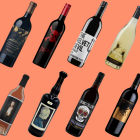The term ‘investment’ typically conjures images of fast-paced stock exchanges, confusing acronyms and a complicated know-how that’s best left to the professionals. And while that’s certainly true of many investment types, wine is different.
Fine wine is part of an increasingly popular subsection of investing: alternative investments. Along with other physical items such as jewellery, antiques, cars and art, investing in fine wine is often called a ‘passion investment’, spurred by an individual’s interest in the goods in question. Fine wine has history and heritage, and a story to tell. It offers a whole world of exploration, and it enriches everyday life. As most fine wine investors will tell you, it’s an altogether more enjoyable investment pursuit than intangible stocks and shares.
But it exists as an alternative asset class for reasons beyond simple pleasure. Fine wine consistently performs extremely well in terms of growth, profitability and stability. And it’s one of the most accessible alternative investments to get involved in, whatever your understanding of fine wine – and investing in general. Let’s debunk some common wine investment myths.
MYTH: You need to know about wine to invest in it
REALITY: You don’t need to be a wine expert to invest in fine wine
It’s certainly true that many investors arrive at fine wine because of an existing interest in the asset class, but you don’t need to be a wine professional to start investing. At its core, fine wine investment is much like any other type of investment, where the laws of supply and demand dictate which investments (in this case, which bottles of wine) are the most valuable, and the investor then acting accordingly. You don’t need to drink wine or have a deep understanding of it to have access to this information – it’s freely available to all via online indices and platforms.
What you do need to know, however, is what your investment objectives are. Are you looking to invest in a safe, long-term asset? Or are you looking for a significant ROI? This is the information you need to get started, and a reputable investment firm such as Cult Wines can then guide you through your options.
MYTH: You need to be very wealthy to invest in fine wine
REALITY: Starting a fine wine portfolio is more affordable than you think
Investments in any shape or form require some element of commitment. You could easily purchase a special bottle or two and keep them stored away for the future and eventually make a modest profit on them, but creating a solid, diversified fine wine portfolio demands a more significant outlay. However, the ability to do this is no longer limited to the ultra-rich. Cult Wines offers a range of fine wine investment services with minimum investment starting at just £10,000.
MYTH: Fine wine investment is the pursuit of older people
REALITY: Younger people are showing increased interest in fine wine investment
For a long time the world of fine wine was dominated by men aged 60 and above, but this is changing rapidly. Technology, shifting social patterns and a growing distaste among younger people for traditional financial instruments means more women and young people are getting involved in fine wine than ever before. According to a recent report, auction house Sotheby’s claims the average age of its fine wine bidders is around 40, compared to 65 back in 1990. The report also noted that of all respondents to its fine wine investment survey, more than a third – 38% – were under 35 years old.
MYTH: Fine wine doesn’t perform as well as traditional investments
REALITY: Fine wine often performs better than traditional investments
With an extended period of compound annual growth rates in the region of 10-20%, fine wine possesses a remarkable track record as an investment, not only greatly outperforming traditional investments, but other alternative assets, too. The latest Knight Frank Wealth Index, for example, shows that even after the challenges of 2020, fine wine is up 13% – higher than cars (6%), watches (5%), jewellery (-1%) and art (-11%). Liv-Ex’s Burgundy 150, which tracks the prices of top Burgundy wines, shot up 76.95% over the past five years, while the FTSE 100 fell by 14.3% over the same period. As an asset class, fine wine even regularly outperforms gold.
MYTH: Wine investment is risky
REALITY: Fine wine investment has low volatility and high stability
In a world where the performance of financial assets can be volatile, fine wine is something of a safe haven. Historical data shows that fine wine has displayed consistently lower volatility in returns over both the short and long term, compared to equities of emerging and global markets.
During the 2008 recession, for example, the Liv-ex 1000 (the broadest measure of the fine wine market) dropped roughly 10% from its peak in August 2008 to a low in December. At this point, it began a steady recovery, recouping all its losses by the end of 2009. In contrast, the FTSE 100 dipped by 47.82% and took more than five years to return to pre-2008 levels. More recently, the first quarter of 2020 saw stock markets spiral into free fall in the wake of COVID-19. While the S&P Global Luxury Index fell 23%, the Liv-ex Fine Wine 1000 slipped just 4% and had already begun its recovery by May.
And, of course, the very nature of fine wine adds to its stability. The longer you hold on to a fine wine, the more consistent returns become. This is because, over the long-term, the demand-supply imbalance is exacerbated by increasing consumption and subsequently decreasing availability, and therefore wines become more desirable due to rarity and improvements in quality as they age.






